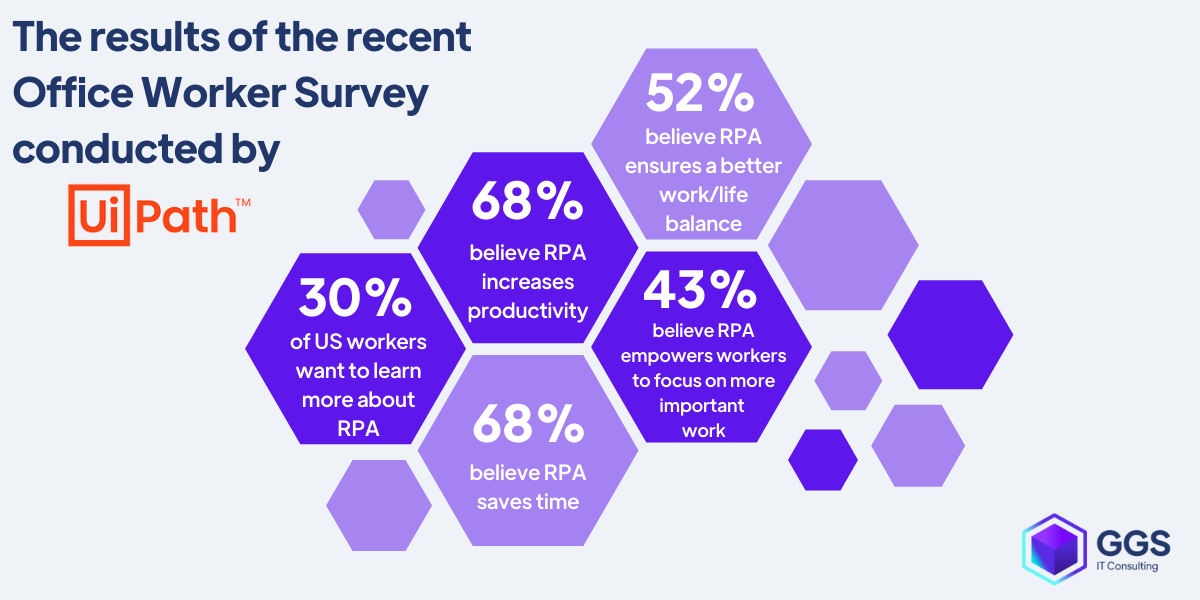
In today’s fast-paced world, businesses are constantly seeking ways to enhance productivity and reduce costs. One technology that has emerged as a game-changer in IT operations is Robotic Process Automation (RPA). With its ability to automate repetitive tasks and streamline processes, RPA is revolutionizing the way businesses operate. In this article, we will delve into the role of RPA in IT operations and explore how it can significantly enhance productivity and reduce costs.
When it comes to IT operations, efficiency is key. The traditional manual approach to handling tasks can be time-consuming and prone to errors. This is where RPA comes in, offering a solution that not only saves time but also improves accuracy. By automating repetitive tasks, such as data entry, file transfers, and system maintenance, RPA frees up valuable time for IT professionals to focus on more complex and strategic initiatives. This not only boosts productivity but also allows businesses to make the most of their IT resources.
In addition to enhancing productivity, RPA also has a significant impact on cost reduction. With RPA, businesses can eliminate the need for manual labor in routine IT operations, reducing staffing costs. Moreover, the efficiency and accuracy offered by RPA minimize the risk of errors, which can be costly to rectify. By streamlining processes and reducing errors, RPA helps businesses save money in the long run.
In conclusion, the role of RPA in IT operations cannot be overstated. By automating repetitive tasks and streamlining processes, RPA enhances productivity and reduces costs for businesses. Its ability to free up valuable time for IT professionals and minimize errors makes it a valuable tool in today’s fast-paced business landscape. As businesses continue to seek ways to stay ahead of the competition, RPA proves to be a game-changer in IT operations. So, embrace the power of RPA and unlock new levels of productivity and cost savings for your business.
RPA (Robotic Process Automation) plays a crucial role in enhancing productivity and reducing costs in IT operations. By automating repetitive tasks, RPA allows IT teams to focus on more strategic initiatives, improving overall efficiency. With RPA, organizations can streamline workflows, eliminate manual errors, and accelerate task completion. This technology not only boosts productivity but also leads to significant cost savings by reducing the need for human intervention. Implementing RPA in IT operations is a game-changer for businesses looking to optimize their processes and achieve greater operational efficiency.

The Role of RPA in IT Operations: Enhancing Productivity and Reducing Costs
Robotic Process Automation (RPA) is revolutionizing the way IT operations are managed, bringing about significant improvements in productivity and cost reduction. With the increasing complexity of IT infrastructures and the rapid advancement of technology, organizations are turning to RPA as a powerful tool to streamline their operations, automate repetitive tasks, and drive efficiency. In this article, we will explore the role of RPA in IT operations and how it can enhance productivity while reducing costs.
Increased Efficiency and Accuracy
RPA enables organizations to automate manual and repetitive tasks that were previously performed by human operators. By leveraging software robots, organizations can eliminate human errors and achieve a higher level of accuracy in their IT operations. These robots can perform tasks with precision and consistency, reducing the risk of mistakes and ensuring that processes are executed flawlessly.
Furthermore, RPA allows for the automation of complex workflows that involve multiple systems and applications. By integrating different software systems and orchestrating the flow of information, RPA enables organizations to streamline their operations and achieve seamless process execution. This not only enhances productivity but also minimizes the time required to complete tasks, ultimately leading to cost savings.
Automation of IT Service Desk
One area where RPA is particularly beneficial in IT operations is the automation of the service desk. The service desk is often inundated with a high volume of repetitive and time-consuming tasks, such as password resets, account creations, and software installations. These tasks can be easily automated using RPA, allowing the service desk agents to focus on more complex and value-added activities.
By automating these routine tasks, organizations can significantly reduce response times and improve customer satisfaction. RPA can handle service requests in a timely manner, ensuring that users receive prompt assistance without unnecessary delays. This not only enhances productivity but also frees up valuable resources that can be allocated to more strategic initiatives within the organization.
Better Resource Utilization
RPA enables organizations to optimize resource allocation and utilize their IT workforce more effectively. By automating repetitive and mundane tasks, IT professionals can focus on higher-value activities that require their expertise. This not only improves job satisfaction but also allows organizations to leverage their skilled workforce more efficiently.
Additionally, RPA can provide real-time insights into IT operations, allowing organizations to identify bottlenecks, inefficiencies, and areas for improvement. By analyzing the data collected by software robots, organizations can make data-driven decisions to optimize processes, allocate resources effectively, and drive continuous improvement. This results in enhanced productivity and cost reduction, as resources are utilized in the most efficient way possible.
Improved Compliance and Security
Compliance and security are critical aspects of IT operations, and RPA plays a crucial role in ensuring adherence to regulations and protecting sensitive data. RPA can enforce standardized processes and procedures, reducing the risk of non-compliance and ensuring that regulatory requirements are met consistently.
Furthermore, RPA can enhance security by automating access controls, enforcing data encryption, and monitoring system activities. By reducing human intervention and implementing robust security measures, organizations can mitigate the risk of data breaches and unauthorized access, safeguarding valuable information and maintaining the integrity of their IT operations.
Benefits of RPA in IT Operations

RPA offers numerous benefits to organizations in managing their IT operations. Some key advantages include:
1. Increased productivity: By automating repetitive tasks, RPA reduces the time and effort required to complete them, resulting in higher productivity levels.
2. Cost reduction: RPA eliminates the need for manual intervention in routine processes, leading to cost savings by reducing labor expenses.
3. Enhanced accuracy: By eliminating human errors, RPA ensures that tasks are performed with precision and consistency, improving overall accuracy.
4. Scalability: RPA can easily scale to accommodate increasing workloads and business demands, allowing organizations to adapt to changing requirements.
5. Improved customer experience: RPA enables faster response times, quicker issue resolution, and improved service quality, enhancing the overall customer experience.
6. Process optimization: RPA provides valuable insights into IT operations, allowing organizations to identify areas for improvement and optimize processes for better efficiency.
Conclusion
In conclusion, RPA has a significant role to play in enhancing productivity and reducing costs in IT operations. By automating repetitive tasks, streamlining workflows, and optimizing resource allocation, organizations can achieve higher efficiency, accuracy, and cost savings. Furthermore, RPA ensures compliance with regulations and enhances security, protecting valuable data and maintaining the integrity of IT operations. Embracing RPA in IT operations is a strategic move that can bring about transformative changes, enabling organizations to stay competitive in today’s digital landscape.
The Role of RPA in IT Operations: Enhancing Productivity and Reducing Costs
- RPA, or Robotic Process Automation, is a technology that uses software robots to automate repetitive tasks in IT operations.
- By implementing RPA, companies can increase productivity by freeing up human employees to focus on more strategic and complex tasks.
- RPA can significantly reduce costs by eliminating the need for manual labor and streamlining processes.
- With RPA, IT operations can achieve faster response times, improved accuracy, and increased efficiency.
- Overall, RPA plays a crucial role in enhancing productivity and reducing costs in IT operations.
Frequently Asked Questions

What is RPA and how does it enhance productivity in IT operations?
RPA, or Robotic Process Automation, is a technology that uses software robots or bots to automate repetitive tasks and processes within an organization. In IT operations, RPA can enhance productivity by taking over manual and time-consuming tasks, allowing IT professionals to focus on more strategic and complex activities. By automating routine processes such as data entry, file transfers, and system monitoring, RPA reduces errors, speeds up operations, and frees up valuable human resources.
Furthermore, RPA can integrate with existing IT systems and applications, enabling seamless data exchange and reducing the need for manual intervention. This not only improves productivity but also enhances accuracy and consistency in IT operations. With RPA handling repetitive tasks, IT professionals can dedicate their time and skills to more critical projects, driving innovation and growth within the organization.
Can RPA help in reducing costs in IT operations?
Absolutely! RPA can significantly reduce costs in IT operations by automating manual tasks that would otherwise require human resources. With RPA, organizations can eliminate the need for additional staff or outsourcing, resulting in substantial cost savings. By automating routine processes, RPA reduces the risk of errors and rework, which can be costly in terms of time and resources.
Moreover, RPA can operate 24/7 without the need for breaks or vacations, ensuring continuous productivity and efficiency in IT operations. This eliminates the need for overtime pay or additional staffing during peak periods. Additionally, RPA can integrate with existing systems, eliminating the need for costly system upgrades or replacements. Overall, the adoption of RPA in IT operations can lead to significant cost reductions and improved financial performance for organizations.
What are the key benefits of implementing RPA in IT operations?
Implementing RPA in IT operations offers several key benefits. Firstly, it enhances productivity by automating repetitive tasks, allowing IT professionals to focus on more strategic and value-added activities. This leads to increased efficiency and faster turnaround times in IT operations.
Secondly, RPA improves accuracy and reduces errors by eliminating manual data entry and other human-related mistakes. This enhances overall data quality and minimizes the risk of costly errors and rework. Additionally, RPA can provide detailed audit trails and logs, enabling better compliance and governance in IT operations.
Lastly, RPA enables scalability and flexibility in IT operations. As organizations grow and their IT operations become more complex, RPA can easily adapt to changing requirements and handle increased volumes of work. This ensures that IT operations remain efficient and effective, even in dynamic business environments.
Are there any challenges in implementing RPA in IT operations?
While RPA offers significant benefits, there can be challenges in implementing it in IT operations. One challenge is the identification and selection of suitable processes for automation. It is crucial to carefully analyze and prioritize processes based on their suitability for automation, complexity, and potential impact on the organization.
Another challenge is the integration of RPA with existing IT systems and applications. Ensuring seamless data exchange and compatibility can require careful planning and coordination with IT teams. Additionally, organizations may need to invest in training and upskilling their IT professionals to work with RPA technologies effectively.
Data security and privacy can also be a concern when implementing RPA in IT operations. It is important to establish robust security measures and protocols to protect sensitive data and ensure compliance with relevant regulations.
How can organizations start implementing RPA in their IT operations?
Organizations can start implementing RPA in their IT operations by following a systematic approach. Firstly, they should identify and prioritize processes that are suitable for automation. This can be done by analyzing process complexity, frequency, and potential benefits of automation.
Next, organizations should select a suitable RPA solution and evaluate its compatibility with existing IT systems and applications. It is important to involve IT teams in the selection process and ensure proper integration and data exchange capabilities.
Once the RPA solution is chosen, organizations should develop a comprehensive implementation plan, including training and upskilling of IT professionals who will work with RPA. Pilot projects can be initiated to test the effectiveness and efficiency of RPA in specific processes before scaling up the implementation.
Regular monitoring and evaluation should be conducted to measure the impact of RPA on IT operations and identify areas for further improvement. By following this approach, organizations can successfully implement RPA in their IT operations and reap the benefits of enhanced productivity and cost reduction.

Final Summary: The Power of RPA in IT Operations
In a world where efficiency and cost reduction are paramount, Robotic Process Automation (RPA) has emerged as a game-changer in IT operations. By automating repetitive tasks, RPA not only enhances productivity but also significantly reduces costs. The adoption of RPA technology has revolutionized the way businesses operate, providing a competitive edge in today’s fast-paced digital landscape.
RPA allows organizations to streamline their IT operations by eliminating manual interventions and leveraging the power of automation. With RPA, mundane and time-consuming tasks such as data entry, report generation, and system monitoring can be seamlessly handled by software robots. This not only frees up valuable human resources to focus on more strategic initiatives but also ensures greater accuracy and efficiency in day-to-day operations.
By harnessing the capabilities of RPA, businesses can achieve operational excellence and drive innovation. The increased productivity and reduced costs associated with RPA implementation enable organizations to allocate resources effectively and invest in areas that drive growth. Furthermore, RPA can integrate with existing IT systems, making it a flexible and scalable solution for businesses of all sizes.
In conclusion, the role of RPA in IT operations cannot be overstated. It has become an indispensable tool for enhancing productivity and reducing costs in today’s digital age. By embracing RPA, organizations can unlock new levels of efficiency, allowing them to stay ahead of the competition and thrive in the ever-evolving business landscape. So, don’t miss out on the transformative potential of RPA – it’s time to revolutionize your IT operations and embrace a future of increased productivity and reduced costs.